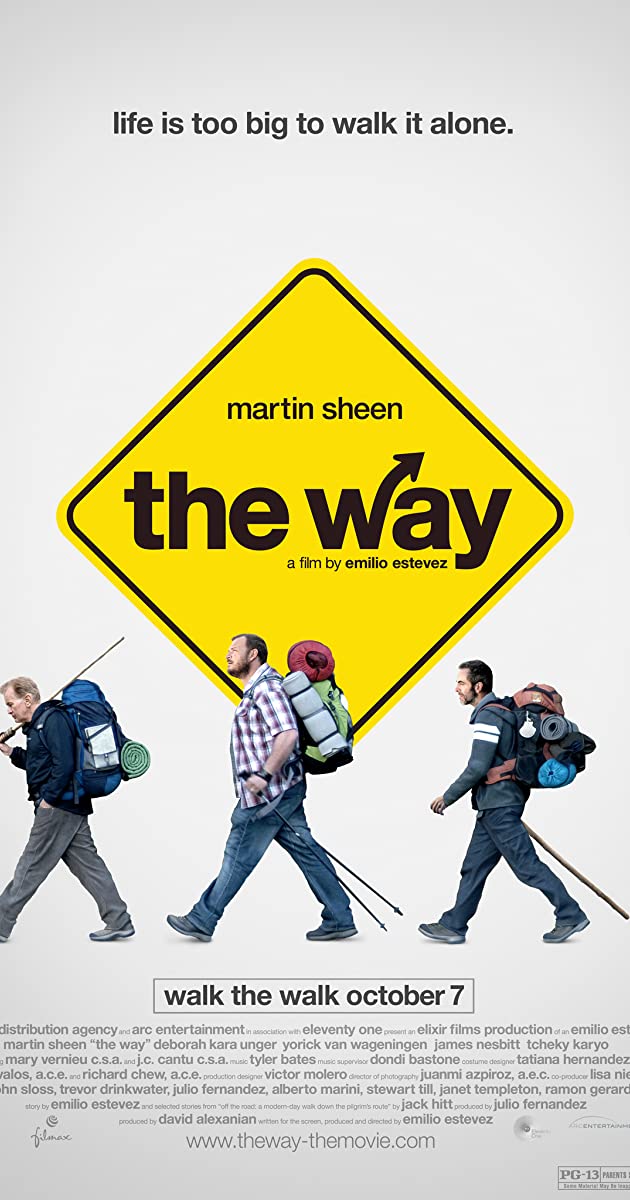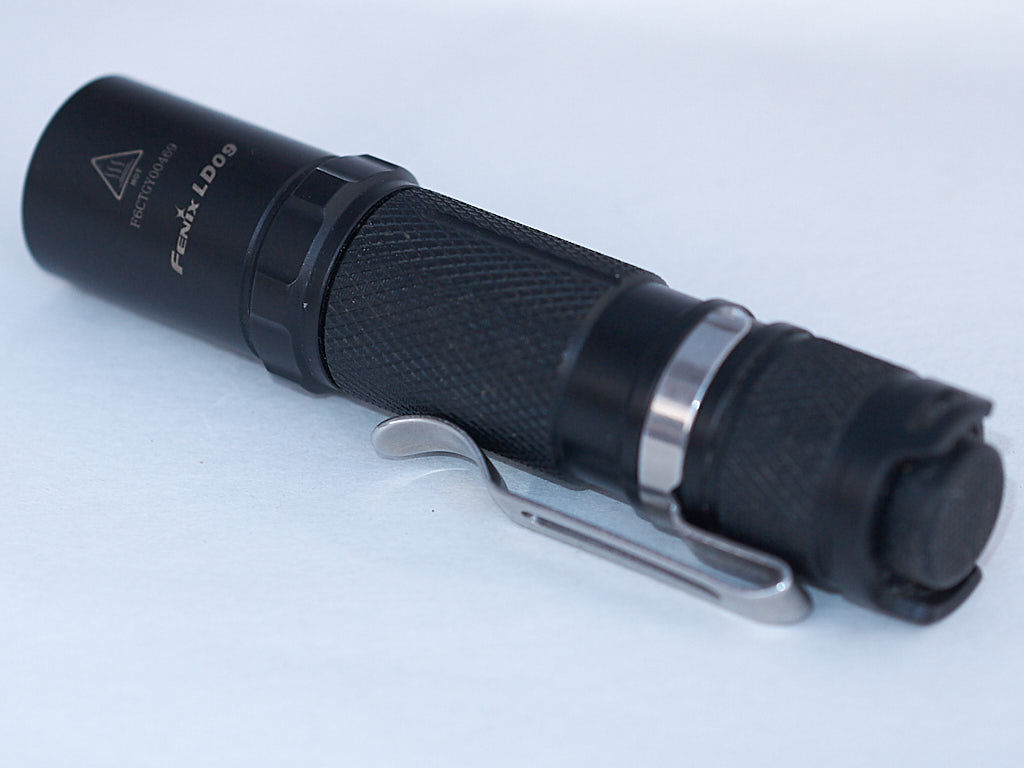The Way movie review

“You don’t choose a life. You live one.” When Daniel Avery asserts his belief right at the beginning of the film, one is ensnared by the tone of the film, right there at that precise moment. This simple truth behind the statement is pivotal to the entire journey of the film.
Daniel Avery is played by Emilio Estevez ( Breakfast Club , Young Guns ), who is also the writer, producer and director of The Way . His character appears in flashbacks throughout the film, serving as a reminder to this one simple sentence.
The Way, released in 2010, brings together the father-son duo of Martin Sheen ( Apocalypse Now, The West Wing ) and Emilio Estevez. The film is set and shot on the Camino de Santiago (the Way of St. James), the ancient pilgrimage to the shrine of the apostle St. James the Great in the Cathedral of Santiago de Compostela in Galicia in northwestern Spain, where tradition has it that the remains of the saint are buried.
Encouraged by his father to make a movie with the Camino as a backdrop, Estevez took to writing this film as a very personal project. For it was inspired by personal circumstances – Martin Sheen had taken an impromptu driving trip with his grandson (Emilio’s son) Taylor on the Camino de Santiago and it was there that Taylor met his now wife.
The film is also a bookmark on the father-son dynamics between Martin and Emilio, two very strong-minded and passionate individuals. One can read more on their lives and journeys through their dual memoir Along the Way: The Journey of a Father and Son ( available on Amazon India ). In the book, they talk of the coming about of The Way and how it brought to full circle the Estevez family saga: Martin Sheen’s father was born in the Galicia region before emigrating to the U.S. and Emilio’s son Taylor had moved back to Spain to marry and live.
The film is as much a poignant reflection of the gossamer relationship between a father and son and its evolutionary journey as much as it’s a reflection of our walk, our spiritual quest that is life.
Tom Avery is an ophthalmologist in an idyllic American town. As news of his son’s death in the Pyrenees comes in, Tom travels to France to get his son’s body home. A lapsed Catholic, this doctor for the eyes – the windows to the soul – has but himself to confront and handle his grief. He broods over his last memory with his son. It isn’t a pleasant one, as the father drops the son to the airport, unable to grasp why the son’s travelling again, why he is unable to choose a life that settles him at a location with a particular identity.
Once in France, Tom is informed that Daniel was on the Camino de Santiago and hadn’t been able to even make it to his first pit-stop. Tom makes an impromptu decision to complete the 500-mile walk for his son. He makes the peregrination with his son’s ashes. What starts as an homage turns into Tom’s walk: to seek his way and find true salvation.
On his route, Tom meets other people, all looking for some form of meaning in their lives. They come from all over the world, partaking of this shared experience with the community they walk alongside, yet each on his/her individual interior journey.
Tom is joined by three other pilgrims in particular – Joost (a delightful Yorick van Wageningen) from Amsterdam who is walking the route to lose weight for his brother’s wedding and so that his wife will desire him again; Sarah (Deborah Kara Unger), a Canadian with a history of abuse, who is walking the route to quit smoking; Jack (James Nesbitt), an Irish travel writer having trouble with some original thought, who is walking the route to write a book on the Camino.
All three pilgrims walk to escape from an ugly demon–feeling unwanted despite a warm jovial nature, feeling broken despite a seeming worldly-wise and brave exterior, feeling lost and stuck despite a gift for expression and dreams. They stick to Tom as he walks on clutching his walking staff, grasping onto his intangible grief.
As Tom leaves his son’s ashes behind at certain points in the route, he starts his cathartic recovery. The Way is deliberately paced as it documents the pilgrims’ progress: The once ‘old’ Tom, who was tired to walk the golf course, leads the quartet with a fierce determination. He’s able to be a father to these strangers in a way that he was never able to be a father to Daniel.
Estevez claims parallels between his pilgrims and the characters from the Oscar®-winning and Best Picture nominated classic The Wizard of Oz (1939). “Sarah was broken, fragmented, and self-flagellating, if you will. So, when we meet her, she’s got a hole in her heart and she is our Tin Man,” Estevez says. “We meet the Cowardly Lion in Joost in that he’s big and lovable. And when Tom says, ‘What are you, all five?’ He says, ‘No, I’m just scared’. Then, Jack, of course, is our Scarecrow, suffering from writer’s block, not having a brain.”
As the pilgrimage draws to a close, we see the pilgrims become more pliable, clear-sighted and accepting of their own vulnerabilities, foibles and demons. As they enter the Cathedral of Santiago de Compostela, the serene sanctity of the shrine and their own inner engineering over the course of the walk reflect off their seraphic faces. It is here in the seat of faith and divinity, where our pilgrims embrace their own transcendental and humble selves.
The Way , an allegory to one’s own awakening, whether spiritual or personal, finally culminates at the shoreline at Cape Finisterre, in ancient times acknowledged as the End of the Word! or Life as We Know It. It is here that Tom ends his trip with his son’s mortal remains, as Daniel’s ashes rise to meet the foaming waves.
Tom’s journey doesn’t stop here. He sets out to live his life by becoming his son, affirming an echo from an episode earlier in the film, “our children are the very best or the very worst of us.”
And Tom embraces his best.
- Genre: Action & Adventure, Comedy, Drama
- Directed & Written By: Emilio Estevez
- In Theaters: Oct 7, 2011
- Box Office: $ 4,300,000
- Runtime: 115 minutes
- Studio: Icon Entertainment
What The Way did for me
- There is no right or wrong road. The road you walk paves your way – and you persevere along that way to make it the route to your destination. Like the grooves on the scallop shell, the iconic symbol of the Camino de Santiago, that all converge at one node, there may be many routes to your destination, each one unique and enticing, all leading to the destination we are seeking.
- The destination of any journey keeps us determined along the path, like the shiny lodestar for there is no place like ‘home’. But pay attention to the journey, the little moments: observe, learn, laugh, exercise caution and restraint, use judgment and experience wisely. These are lessons I’ve culled from The Way .
- And most importantly, travel and embrace adventure. Get out of your everyday routine and go for a walk. A hike. A trek. Climb. See the outdoors and revel in the beauty and lessons it imparts. The outdoors will never let you down.
How often has one faced the bramble questions of the unquiet mind, immersed in a picture of a faraway land and then brushed the memorised picture into the overflowing ‘to do in the future’ jar?
How often has one pined after the memory of a life, quickly dissipating, till all that remains is a bittersweet sillage? How often has one rued being too busy when young and now too tired when old?
“Walk into that memorised picture. Dare to create that life for yourself. Embrace your adventure. On your Way! Buen Camino!”
Trivia
- There are claims of divine favour made by the crew. They weren’t given the permission to shoot inside the cathedral until 48 hours prior. The weather also supported them for the 40-day shooting along the trail, despite forecast of rain.
- Michael Sheen suggested Michael Douglas or Mel Gibson for the lead role, but Emilio Estevez had written the main character’s role specifically for his father.
- Emilio Estevez directed the film each day dressed as Daniel so he could quickly jump into the scene when needed.

